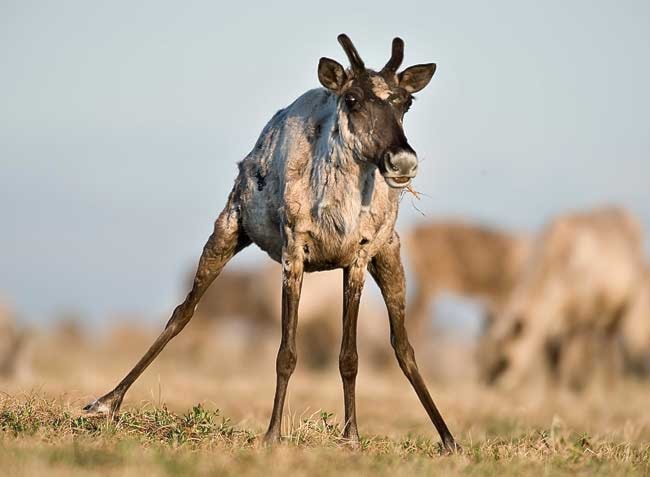The Porcupine caribou herd is healthier than predicted.
In fact, it has grown.
While there isn’t an exact number just yet, a photocensus from the Alaska Department of Fish and Game confirms there are more animals than there were in 2001.
Five different photocensuses from 1989 to 2001 showed a decline in the herd from 178,000 to 123,000 animals.
Both Alaskan and Canadian biologists assumed the herd had continued to decline, but in nine years there hasn’t been a successful count to prove that.
Estimates the herd had dropped below 100,000 animals had territorial and First Nation governments flirting with hunting restrictions.
However, in July the weather co-operated with biologists, allowing an accurate count of the herd.
On Thursday afternoon, American officials announced they had counted 123,000 caribou, and still had many more to go.
“Cautiously excited, that’s the feeling I’ve got right now,” says Joe Tetlichi, chair of the Porcupine Caribou Management Board.
The news allows a “green light” for hunting, according to the harvest-management plan signed by all eight parties across the Northwest Territories, Yukon and Alaska in April 2010.
The plan identifies several ways to curb harvesting, including a “bulls only” rule.
“We still have that plan and we have to enforce it to the communities,” says Tetlichi. “We don’t want to get to the red zone, we don’t even want to get to the yellow zone.”
But he isn’t worried.
“The communities are already aware that the caribou could get to a point where there’s no return,” he says. “I know a lot of them today have no caribou because they’ve sacrificed their hunting for the conservation of the Porcupine caribou. The communities are the ones that made this happen.”
An exact number from July’s photocensus is expected early March, says Cathie Harms from the Alaskan Department of Fish and Game.
There were concerns that the photos caught some overlap with the neighbouring Central Arctic caribou herd.
“If we do suspect overlap, we just eliminate that group from our count,” she says. “All indications at this point are, even if there is overlap, it’s not going to affect the total dramatically because it would only be a 1,000 here and a 1,000 there. It wouldn’t be significant.”
The territorial government is now in the process of revising its interim conservation measures that it put in place in 2009, according to a news release issued Thursday. But they are committed to the harvest-management plan, it says.
Contact Roxanne Stasyszyn at roxannes@yukon-news.com
